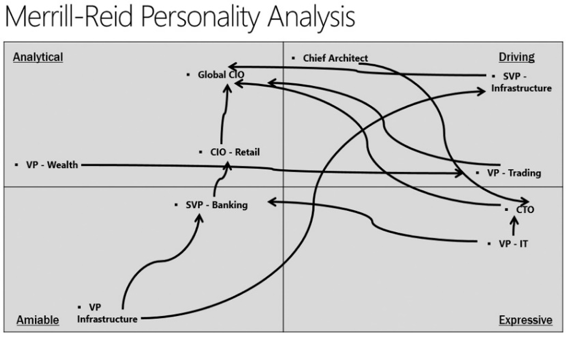Over 20 of the top 1% sales professionals that you’ve heard on the Sales Success Stories Podcast are either writing or have already submitted their stories for a collaborative book project we’re all working on together. A book like this that consists 100% of real stories from real sales professionals should have a great title, so we’re calling it Sales Success Stories!
More details about the project and the opportunity to pre-purchase, and even get thanked in the book itself, are available here: top1sales.wpengine.com/book
In between the regular interview episodes until the book is published in October you’ll find a sample story like this one. You can either listen to the episode and here Trong read his story, or read the full text below.
Trong and I will also be taking the stage together at the Enterprise Sales Forum in NYC next Tuesday (June 19, 2018). Details and tickets are available at: top1sales.wpengine.com/esfnyc
We’d love to see you there!
Here’s one of the four stories that Trong has submitted for the book. Enjoy!
I’m 6’4” and Devilishly Handsome
When you talk to sales managers or VPs of Sales, they always ask the same questions: “Do you have relationships with the CXO? What’s your relationship with the CXO? How can you close that deal without the CXO’s support?”
These questions are not wrong; I just don’t think they’re very helpful. If they just pivot a little bit, the whole conversation changes. What I would ask is, “How can we develop relationships with the CXO?” When you start asking that question, it lends itself to deeper thought and introspection.
Most sales reps take a very binary approach to relationships. On or off. They either have these relationships or they don’t. At least in their minds. Invariably this perspective leads them down a linear approach to addressing the issue. If they don’t have a relationship with the CXO, then they go out of their way to build that relationship directly. They invite the CXO to social events, dinners, and whatever else they can in the hopes that these bonding moments will lead to future sales.
Direct strategies are useful in certain situations, but not all of them. I would submit that there may be a better way to build these executive relationships. Instead of going at it head on, I want to provide you with a framework in which to think about how you can develop and influence your relationships. This framework is applicable in your personal life as well as your business life. It’s applicable whether you are a customer-facing sales representative or if your work function is internal facing.
In the 1960s, industrial psychologists David Merrill and Roger Reid did an extensive study around dimensions of assertiveness and responsiveness. From that study, they came up with a 2×2 matrix outlining four social styles: analytical, driving, expressive, and amiable. When I first read the study, I wept for days. I was overcome with joy. Forget SpaceX or Tesla, this revelation was akin to Elon Musk harnessing his brilliance in physics and engineering to find a way to create hickory smoked bacon out of thin air.
Here’s the practical application of this theory:
- Step 1: Perform a personality analysis on the CXO, senior executive, or any person you want to build a relationship with and place them in one of the four quadrants.
- Step 2: Then, look at all of the people that influence that person. Do a personality analysis on those people and place them into the appropriate quadrants.
- Step 3: Now think about all of the people that influence the people that influence the client. Do a personality analysis on those people and place them into the right quadrants.
- Step 4: Complete a relationship alignment exercise. Find the right people in your organization to connect to all of those people you have identified and start building those relationships.
Here is the execution of the process in visual form.

Over time, what you have essentially done is executed a complete surround strategy. The main reason why this strategy works is because you are not dependent on one person for success or failure. In our highly matrixed world, decisions are made by committees or groups of people. That’s why this strategy has been so successful.
I was working with a global manufacturing company based in Chicago and executed this strategy to build the right relationships with the Global CIO. Along the way, I had built relationships with the VP of Architecture, SVP of Operations, SVP of Infrastructure, etc. It took me six months and I hadn’t spent any time with the Global CIO at all. Instead of shooting for the moon right away, I first built a ladder to the clouds.
By now I had solved numerous complex issues for this company and had built up my brand as a creative problem solver and Mr. Fixit. It didn’t matter if you had hardware issues, software issues, etc. With some duct tape, vinegar and a pair of chopsticks, I could make MacGyver look bad. I completely influenced those who would influence the Global CIO.
With reputation in hand, I asked the Chief Technology Officer to introduce me to the Global CIO. When I went into the meeting, she said something to me that I will never forget. She said, “Trong, after all of the great stories I had heard about you, I just pictured you would be 6’4” and devilishly handsome.”
I told her I was! It was the start of an enduring and beneficial relationship.
Lessons Learned:
- Developing senior executive relationships takes time. Focus on strategies that develop these long-term relationships. Like all relationships, trust is earned, and it is earned over time.
- If an executive tells you how powerful they are in the company, they aren’t. The only ones that tell you that are the insecure ones who aren’t the real decision makers. Einstein didn’t have to go around telling people how smart he was. You just knew.
- Be genuine and authentic. Smart people will see right through people who aren’t genuine. If you don’t like sports, don’t pretend to be a sports fan just to impress a customer. Find some other common ground to build the relationship on.
- Influence those who would influence the relationships you want to develop.
- Do a personality analysis to understand the person you want to develop a relationship with so that you understand their motivations and what makes them tick.
- Use multiple approaches for building relationships. These include direct, indirect, and surround strategies.
- Focus on adding value, as that will be the foundation for long-term relationships.
- Network and build relationships well before you need them. When the time comes, they will be more open to helping you.
- Integrity is a non-negotiable. Work only with people of integrity. Stay clear of those who are morally ambiguous.
- Leadership styles and approaches change over time. A leader who was good in a particular time and situation may not be suited for others.
Want more? Trong was the star of Episode 25 – Trong Nguyen – Enterprise Sales Success at Microsoft & “Winning the Cloud”
